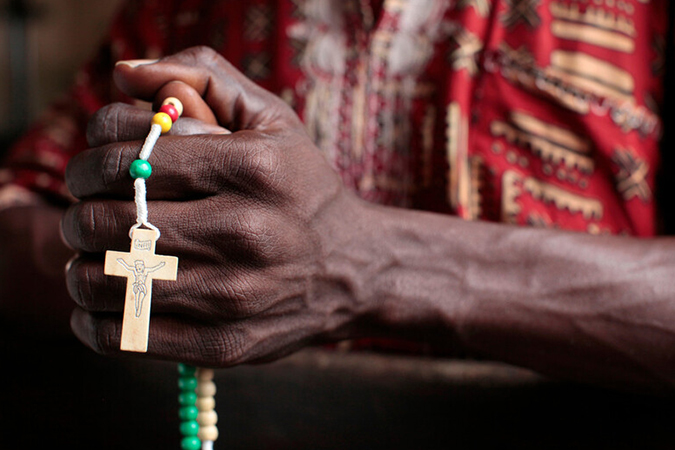
The purpose of our catechesis is not simply to teach facts about the Catholic faith, but to pass on the Catholic faith. It is not enough for our children to know about Catholicism or go through the motions of being Catholic without identifying themselves as Catholic. Our identity is the orientation of our lives, our sense of who we are and our place in the world. If we want our children to fall in love with the Catholic faith and remain committed to it throughout their lives, we must foster in them a sense of Catholic identity so that the thought of losing their faith would mean losing a major part of themselves. This series will explore five characteristics of Catholic identity and how we can nurture those in our children.
A Sense of Sacramentality
God is beyond all human words and concepts, yet desires to be in relationship with us and so gives us the opportunity to experience him through sacramentality—a way of using signs and symbols that we can see, hear, taste, smell, and touch, to communicate the mystery of faith. We see the waters of Baptism poured over the newest Christians; we hear the words, “I absolve you from your sins;” we taste the consecrated bread and wine; we smell the fragrant oil of Confirmation; and we feel the rings on our fingers which join us in matrimony. In the sacraments we experience the grace of God tangibly through actions and objects, which allow us to connect more deeply to the inner realities they represent and become.
In addition to the seven sacraments, the Catholic sense of sacramentality permeates our daily lives and how we experience God’s presence in the world around us. Sacramental objects such as rosaries, statues, medals, and candles help us to focus on the intangible God. The cycles and feasts of the liturgical year, as well as the Liturgy of the Hours throughout the day, remind us that every season and every moment is from God. With our bodies, we fast, bow, kneel, make the Sign of the Cross, and perform other actions and gestures, because we know that our spirit and body are one. We enact rituals, sing, and meditate in silence, because we understand that our words alone are not enough to convey the mystery of God.
Some ways to encourage a sense of sacramentality in our students include:
- Create a prayer table in every classroom. Change the colors and objects with the liturgical season.
- Pass a traveling statue or icon to a different child each week to take home to use in prayer with his or her family.
- Go on nature walks to appreciate God’s presence in creation.
- Place a bowl of holy water at the doorway of each classroom for the children to bless themselves when they enter. Encourage families to use holy water in their homes.
- Mark each week on a liturgical calendar with the students. Use a circular calendar and a brass fastener in the middle with an arrow pointing to where we are in the cycle.
- During Lent, find things in the classroom routine from which to fast, such as snack time, stickers or candy prizes, or getting drinks from the water fountain.
- Teach students many different prayer gestures, including kneeling, folded hands, and orans position. Allow students to choose their posture during prayer time.
- Encourage imaginative prayer with children, guiding them to visualize an encounter with Jesus.
What ideas do you have for encouraging a sense of sacramentality?




Leave a Reply